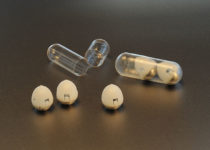Everything You Need To Know About Diabetes

Diabetic cases are on the rise all around the world, including in India. India has the world’s second-largest population, with about 1.3 billion people. According to the International Diabetes Federation, 72.9 million adults in India had diabetes in 2017.
What is Diabetes?
When we eat a meal, it is assimilated into glucose (sugar), which enters the bloodstream. It triggers the release of the hormone insulin by the pancreas. Insulin functions as a key to allow glucose into the cells, where it is subsequently utilized for energy by the cells. The body either resists insulin or does not produce enough of it if in diabetes. As a result, rather than being used for energy, glucose builds up in the bloodstream.
Diabetes comes in different types. What are those?
- Prediabetes: What You Should Know
Before developing type 2 diabetes, people display prediabetes — blood sugar levels that are higher than usual but not yet high enough to be diagnosed as diabetes. There are some signs and symptoms of diabetes, as well as some complications.
- Understanding Type 1 Diabetes
Type 1 Diabetes is less frequent than Type 2 Diabetes. This type of diabetes is caused by an autoimmune reaction in which the immune system attacks the pancreas’ insulin-producing cells. Therefore, the pancreas either produces no insulin or produces only a modest amount. Then, the body turns carbohydrates into glucose, which is then converted into energy, and insulin transports glucose from the bloodstream to the cells. Type 1 Diabetes affects more children than adults, but it can strike anyone at any age.
- Understanding Type 2 diabetes
Type 2 Diabetes is most common in people above 45 years, but it is common in younger adults, including teenagers and children. Type 2 Diabetes is the result of insulin resistance, in which the pancreas is unable to produce enough insulin to meet the increased demand for it. Type 2 diabetes management entails eating well, being active, monitoring your blood sugar, and taking oral medicines or insulin.
- Understanding gestational diabetes
The causes of gestational diabetes are still not known, but millions of women experience it. The placenta is known to assist the infant as it develops. As a result of these hormones, a condition known as insulin resistance can also develop in the mother’s body. Insulin resistance makes it difficult for the mother’s body to utilize the hormone. This may result in her needing to take more insulin up to three times. Gestational diabetes can harm both the mother and baby if left untreated.
- Understanding diabetes from other causes
Very few people develop specific types of diabetes due to various causes and Type 1, Type 2, and gestational diabetes. This includes the following:
- Neonatal diabetes and young-onset diabetes are examples of monogenic diabetes disorders (MODY).
- Cystic fibrosis and pancreatitis-induced diabetes.
- Drug or chemical induced diabetes, due to treatment with glucocorticoids in HIV/AIDS treatment.
- Post organ transplant surgery.
- These kinds of diabetes are mistaken for other types of diabetes due to their rarity.
Diabetes Symptoms: What Are They?
Diabetes can display a variety of symptoms depending on its type.
Symptoms of diabetes include:
- Frequent urination
As a result of high blood sugar levels, the body expels surplus glucose. When the body’s sugar levels rise, the kidneys try to filter out the excess sugar. Urination is more frequent, especially at night.
- Increased thirst
Frequent urinating is the cause of this. Dehydration from frequent urination necessitates drinking water to replenish the body. Urination regularly can cause the body to lose too much water, leaving a person thirsty. This could result in dehydration and a person feeling more thirsty than usual over time.
- Fatigue
Excessive hunger or a strong desire to eat is a common symptom of Type 2 diabetes. Low sugar getting into the body’s cells causes tiredness and weariness. As glucose cannot reach the cells, they signal to keep eating to acquire the glucose they need.
- Blurred vision
One may have poor or blurred vision due to high sugar levels in the eye’s fluid. Blurred vision can affect one or both eyes, and it might come and go. If a diabetic patient is not treated, the damage to these blood vessels may progress, resulting in permanent vision loss.
- Sudden and unexplained weight loss
When the blood cells can’t absorb enough glucose, the body turns to fat as an energy source, resulting in weight loss.
- Numbness or tingling in the hands or feet
Blood sugar levels that are too high can destroy the body’s neurons and cause blood circulation problems. People with Type 2 diabetes may have soreness, tingling, or numbness in their hands and feet due to this. Neuropathy is a disorder that develops when a person’s diabetes is untreated, and it can worsen over time, leading to more organ complications.
- Increased appetite
A common symptom of Type 2 diabetes is excessive hunger or a strong urge to eat. Because glucose can’t get to the cells, they signal to keep eating to get the required glucose. Patients with diabetes frequently do not get enough energy from their food. The digestive system breaks down food into glucose, a basic sugar that the body needs as fuel. In diabetics, glucose is not delivered from the bloodstream to the body’s cells in sufficient amounts.
As a result, persons with Type 2 diabetes often feel hungry all of the time, no matter how recently they have eaten.
- Itching
Increased sugar levels in the blood and urine can cause yeast to overgrow, especially in the vaginal area. Itching, burning, redness, and soreness are all possible side effects.
- Slow-healing sores or cuts
Wound healing takes longer than usual. High blood sugar levels can cause problems with blood circulation by affecting the body’s neurons and blood vessels. Because of alteration in the blood circulation, cuts and wounds may take longer to heal. The body takes a long time to provide nutrients to wounds due to poor blood circulation.
- Recurrent infections
Increased infection rates because glucose in urine promotes the growth of fungi and bacteria. Excess sugar in the blood and urine feeds yeast, which can lead to illness. Warm, moist skin areas such as the mouth, genitals, and armpits are particularly susceptible to yeast infections.
- Dry mouth
Excessive urination leads to dehydration. Lack of hydration makes the person feel dryness in the mouth and also bad breath.
- Dark spots appear on the skin
Dark areas on the skin, particularly in the creases of the neck, armpit, or groin, can also suggest a higher risk of diabetes. These patches could have a velvety feel to them. Acanthosis nigricans is the name for this skin condition.
Diabetes: What Causes It?
Having too much glucose circulating in your bloodstream is the primary cause of diabetes, regardless of the type. However, the explanation for the elevated blood glucose levels varies depending on the type of diabetes. Some causes of diabetes are given in the following list:
Type 1 diabetes: This is caused by an immune system disorder. Insulin-producing cells in your pancreas are attacked and destroyed by the body. Glucose builds up in the bloodstream due to a lack of insulin to let glucose into the cells. In some patients, genes may also play a role. A virus can also cause an immune system attack.
Type 2 diabetes: Diabetes Mellitus and prediabetes are caused by insulin resistance. Insulin does not function properly in the body, preventing glucose from entering them. This means that insulin resistance has developed in the cells. The pancreas can’t keep up with the demand for insulin and can’t produce enough to overcome the resistance. Glucose levels in the bloodstream grow.
Gestational diabetes (GD): It occurs when the placenta produces hormones that make the cells more resistant to insulin throughout pregnancy. Hormones produced by the placenta during pregnancy cause gestational diabetes. The pancreas are unable to produce sufficient insulin to overcome this resistance. There is an excessive amount of glucose in the circulation.
Which Factors Contribute to Diabetes?
The factors that raise the risk of diabetes vary depending on which form of diabetes you get.
The risk factors for Type 1 diabetes:
- Family history of diabetes (parents or siblings)
- Pancreatitis: A condition in which the pancreas is injured (such as by infection, tumor, surgery, or accident)
- Autoimmune disease: Where autoantibodies mistakenly attack the body’s tissues or organs
- Physical stress, such as surgery or illness
- Infection caused by viruses
The risk factors for prediabetes and Type 2 diabetes:
- Family history of diabetes
- Being overweight
- High blood pressure
- Having a high triglyceride level and a low HDL cholesterol (the “good” cholesterol)
- Inactivity or lack of exercise
- If you are 45 years old or older
- Having gestational diabetes or having a kid who weighs more than 9 pounds
- Polycystic Ovarian Syndrome (PCOS)
- Being a smoker
The risk factors for gestational diabetes:
- Prediabetes or Type 2 diabetes in parents or siblings
- Being overweight before conception
- Being over the age of 25
Diabetes is often associated with several risk factors. Some of the risk factors can be controlled, whereas some cannot be.
Controllable risk factors:
- Obesity
- Cigarette smoking
- Exercise
Uncontrollable risk factors:
- Family history
- Ethnicity
- Gender
- Age
- Autoimmune disorder
What Are the Treatments For the Disease?
Diabetes treatment plans are divided into three categories:
1. Diabetes management:
Diabetes affects every part of the body. To effectively manage diabetes, one needs to take actions to keep the risk factors in check and within normal limits, such as:
- Follow a food plan.
- Take the recommended medicine.
- Increase exercise level to keep the blood glucose levels as close to normal as possible.
- Maintain normal blood cholesterol (HDL and LDL levels) and triglycerides.
- Maintain a healthy blood pressure level. Maintain blood pressure below 140/90 mmHg.
2. Lifestyle changes to prevent diabetes:
- Following a healthy meal plan: Follow a Mediterranean diet (vegetables, whole grains, beans, fruits, healthy fats, low sugar) or the Dash diet (vegetables, whole grains, beans, fruits, healthy fats, low sugar). These diets are high in fibre and nutrition but low in fats and calories.
- Exercising regularly: On most days of the week, exercise for at least 30 minutes. Take a walk, go for a swim, or engage in other physical activities.
- Manage your weight: Developing a weight-loss plan with the help of a professional can help.
- Medication: Take medication and insulin as recommended and adhere to the instructions on how and when to take it. Keeping a close eye on your blood sugar level and blood pressure is also part of diabetes management.
- Regular follow-up with the healthcare professionals and completing laboratory testing as directed by the doctor.
- Quitting smoking.
3. Treatment with medications
The following drug classes are used to treat diabetes:
- Sulfonylureas: These medications cause the pancreas to release more insulin, lowering blood glucose levels. Examples include Glimepiride (Amaryl), glipizide (Glucotrol), and glyburide (Micronase, DiaBeta).
- Glinides (also known as meglitinides) are medicines that cause the pancreas to release more insulin, lowering blood glucose levels. Examples include Repaglinide (Prandin) and Nateglinide (Starlix).
- Biguanides are medications that reduce the amount of glucose produced by the liver. It also enhances insulin sensitivity and delays the conversion of carbohydrates to sugar in the body. One example is metformin (Glucophage).
- Alpha-glucosidase inhibitors: These medications reduce blood glucose levels.
They reduce blood sugar by delaying carbohydrate digestion and limiting glucose absorption in the small intestine. Acarbose (Precose®) is an example.
- Thiazolidinediones: These medications enhance better performance of insulin in the body by enabling more glucose into muscles, fat, and the liver.
- GLP-1 analogues (also known as incretin mimetics or glucagon-like peptide-1 receptor agonists) enhance insulin release, limit glucose release from the liver after meals, and prolong stomach emptying.
- DPP-4 inhibitors are known to help the pancreas produce more insulin after a meal. They also reduce the quantity of glucose that the liver produces.
- SGLT2 inhibitors are drugs that block sodium-glucose cotransporter 2. These medications operate by removing glucose from the body through urine.
To get better blood glucose control, oral diabetic medicines are taken in combination or with insulin.
What Insulin Medicines are FDA-approved for Diabetic Treatment?
Insulin comes in a variety of forms for diabetes patients:
- Rapid-acting insulins are taken 15 minutes before meals, peak at one hour (when blood glucose levels are lowest), and work for another two to four hours.
- Short-acting insulins take around 30 minutes to reach the bloodstream, peak in two to three hours, and last for about four hours.
- Intermediate-acting insulins enter the system in two to four hours, peak in 4 to 12 hours, and last up to 18 hours. Long-acting insulins work to keep the blood sugar constant throughout the day. These insulins usually persist for roughly 18 hours.
What is the Procedure for Diagnosing Diabetes?
The glucose level in a blood test is used to diagnose and manage diabetes. The three tests that help to determine the blood glucose level are:
- Fasting glucose test
- Random glucose test
- HbA1c test
What Are the Complications of Diabetes?
The tissues and organs get damaged if the blood glucose level remains high for an extended period of time. Some issues can become life-threatening if left untreated.
Complications include:
- Coronary artery disease
- Nerve injury (neuropathy)
- Nephropathy
- Cataracts and glaucoma
- Skin infections
- Erectile dysfunction
- Hearing loss
- Depression
- Dementia
- Dental problems
Complications of gestational diabetes:
In the mother:
- Preeclampsia
- Risk of gestational diabetes during future pregnancies
- Risk of diabetes later in life
In the newborn:
- Higher-than-normal birth weight
- Low blood sugar (hypoglycemia)
- Risk of Type 2 diabetes in adulthood.
Conclusion
Diabetes is not reversible. You must be treated and monitored for this disease for the rest of your life. Many symptoms and complications can be reduced by drugs, insulin, diet and lifestyle modifications.
Make an appointment with your diabetologist to see if you have risk factors for diabetes, or are experiencing symptoms of it. Weighing your risks, taking a few screening tests, and developing healthcare goals can keep you healthy.
If diabetes runs in your family or if you have risk factors, then there is an increased chance of you getting diabetes. If you take care of your diet, body and health, you will reap the benefits for a long time.


